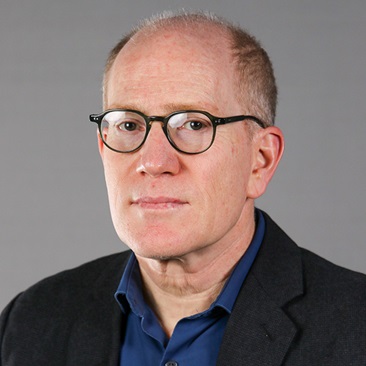
Maxwell Panel Weighs the Implications of the Proposed Dismantling of the Department of Education
March 13, 2025
The Center for Policy Research’s latest ‘What’s at Stake’ discussion explored the potential effects on public schools, Title IX, higher education accessibility and more.
What’s the role of the U.S. Department of Education? If the department were to be dismantled—as proposed by the Trump administration—how would students, families and universities be affected?
Those are a few of the questions examined by a multidisciplinary panel of Maxwell School faculty experts during a recent “What’s at Stake” panel discussion hosted by the Center for Policy Research (CPR).
More than 250 people joined the virtual event held four days before the swearing in of Secretary of Education Linda McMahon. The same day, she sent her staff an email titled “Our Department's Final Mission” fueling speculation that an executive order to abolish the Department of Education would soon follow. On March 11, the department announced it would cut its workforce nearly in half, to about 2,183 workers.
Robert Bifulco, professor of public administration and international affairs, moderated the conversation with colleagues Elizabeth Martin, assistant professor of sociology; Michah Rothbart, associate professor of public administration and international affairs; and Sean Drake, assistant professor of sociology. All four panelists are senior research associates at CPR.
To open the session, Bifulco provided some factual context about the Department of Education. In its 2024 fiscal year budget, he pointed out, the department administered programs totaling $268 billion—about 4 percent of the federal budget, a far smaller piece than agencies such as the Department of Health and Human Services or the Department of Defense. About 60 percent of the Department of Education budget is spent on Pell grants and federal student loan programs; 17 percent on Title I grants to high poverty schools; and 14 percent to support the education of students with disabilities. “Each of these programs, which together account for over 90 percent of the department’s budget, was established prior to 1979, when the department itself was established,” noted Bifulco, who serves as director of CPR’s Program on Educational Equity and Policy.
“President Trump claims the department has been overtaken by radicals, zealots and Marxists, that it promotes liberal ideologies in schools, and that it wastes taxpayers’ money,” he added. “But when you look at the overwhelming bulk of what the department focuses on and what its budget allocations go for, it’s not clear what most people would want to see cut.”
Martin, whose own research focuses on economic insecurity, credit and debt burdens, and financial shocks, spoke to the broad impact of the Department of Education’s programs for students pursuing higher education.
“This is everything from Pell grants that help lower income students, to work study, to student loans, both subsidized and unsubsidized,” she said. “So dismantling the Department of Education, moving the federal aid functions either to states or to the Department of Treasury, which is one proposal I’ve seen, would affect a lot of people. Something like 20 percent of all U.S. households have student loan debt; 30 to 40 percent of students who are currently enrolled are taking on loans every semester.”
One potential consequence of shifting student aid programs out of the federal government, she added, would be to increase gaps between states in higher education opportunities, particularly at public institutions.
“We see huge inequalities in appropriations per student, credit hour and tuition costs, and merit- and need-based scholarships,” Martin said. “If federal aid or student loans are moved down to the state level, I imagine that we would see even more widening inequality between states.”
Shifting educational loans away from the federal government may also result in greater reliance on private loans—and the loss of key protections, pointed out Rothbart, who studies public finance and financial management particularly in education.
“Federal student loans provide protections against inability to pay in some circumstances,” Rothbart said. “I could imagine a world where there would be a large increase in the use of private borrowing to pay for higher education, and then students would not have those protections as they move out in their careers.”
In the area of public school funding, Rothbart noted that cutting the Department of Education’s programs, or shifting them outside the federal government, could have unintended consequences on the department’s influence over policy.
“The federal government only provides a small portion of public school funding, but it leverages that to nudge educational priorities,” he said. “That approach has been in place for years, even predating the formation of the Department of Education. I think it's important to note that the use of this funding to shape policies can be effective. It actually presents a catch 22 for conservative administrations like the one that’s currently in the office of the presidency, because if the federal government makes cuts to these programs, they could lose some of that leverage to incentivize their other priorities.”
Bifulco said the elimination of Department of Education programs that account for more than 90 percent of its spending would require congressional action. “I think that’s very unlikely,” he said. More likely, he said, is a shift of functions to other federal departments, for instance, moving the Office of Civil Rights out of the Department of Education into the Department of Justice. “That could have big effects on how civil rights are enforced, and what data is collected on civil rights,” he said.
Rothbart said the reshuffling of programs under federal departments “is actually a pretty fruitful discussion.” He pointed out several programs that fall under the purview of education yet are not overseen by the Department of Education, for instance, Head Start is administered by the Department of Health and Human Services, national school meals programs are run by the Department of Agriculture, and the GI Bill is overseen by the Department of Veterans Administration. “You could imagine moving programs from other agencies into the Department of Education if it were a different administration,” he said, later adding, “There hasn’t been a major reshuffling of the federal government across agencies in a long, long time.”
Another important impact of proposed changes and cuts to the Department of Education would be in the area of research and data collection, noted Drake, who studies school segregation and inequality and how educational policy affects students of color.
“The Department of Education conducts extensive empirical research to identify best practices for teaching and learning and on other critical issues, like school safety and nutrition,” he noted. “So cutting the department’s research budget will ultimately make schools less effective, less safe and less healthy. The Department of Education also has responsibilities for enforcing Title IX, so abolishing the department, or even moving some of its functions around to different parts of the government, will surely weaken Title IX considerably.”
A question from the audience led to a discussion of how reshaping or shuttering the Department of Education might affect the cost of higher education. Several panelists noted that the proposed changes seem unlikely to reduce costs or make higher education more accessible, and Drake shared his view that this isn’t the administration’s aim, in any case.
“I don’t think the Trump administration cares about the cost of college at all,” Drake said. “I don’t think they’re particularly focused on disadvantaged students or underrepresented students. I don't think that they’re interested in efficiency with what they’re proposing with the Department of Education, whether gutting it, cutting it or abolishing it. I really think that is an excuse and justification for other motives that they have.”
Responding to Drake’s point, Rothbart noted that the administration’s stated goal to cut programs that promote diversity, equity and inclusion brings up again the question about the potential loss of influence over policy.
The administration, he said, has “made it pretty clear that they think DEI programs are discriminatory. Their ability to get states to change the way in which they’re implementing those programs, or to eliminate them, goes away if these programs are cut.”
As the roundtable wrapped up, Bifulco expressed his hope that discussions would continue beyond the online forum. Participants were encouraged to share the full video, available on the Center for Policy Research website.
By Jeffrey Pepper Rodgers
Published in the Spring 2025 issue of the Maxwell Perspective
Related News
Commentary

Dec 3, 2025
Commentary

Dec 2, 2025





